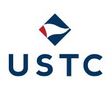
USTC
USTC A/S (United Shipping & Trading Company)
Ontdek USTC

United Shipping & Trading Company (USTC Group) is a family business and the parent company behind the companies Bunker Holding, SDK Freja, Uni-Tankers, Selected Car Group, GRM, CM Biomass, Unit IT and Selfinvest. With our deep roots, strong values and family culture, we work with great dedication to create a connection across the group's development activities and business processes.
From the old Turbine hall in Middelfart, we are in touch with the whole world. Everyday life at USTC is constantly evolving, but always firmly anchored. With our sharp business acumen and passion for what we do, we pave the way towards sustainable growth. With respect for where we come from and where we are headed, we not only work towards the ambition of securing a stable foundation, so that we remain the market leader, but also towards creating a sustainable group and workplace – also for the future generations to come.
As an employee at USTC, you will experience an extraordinary international atmosphere, where closeness and professionalism go hand in hand.
Hoe is het om te werken bij hen?
Neem een duik in het bedrijf
Learn more about the USTC Group here
Oprichtingsjaar
1876
Internationale aanwezigheid
38 landen
Waarden
Famility ownership • Long-term value creation • Agile leadership • Optimum environment for growth
Het USTC ecosysteem
Het moederbedrijf

USTC
USTC A/S (United Shipping & Trading Company)